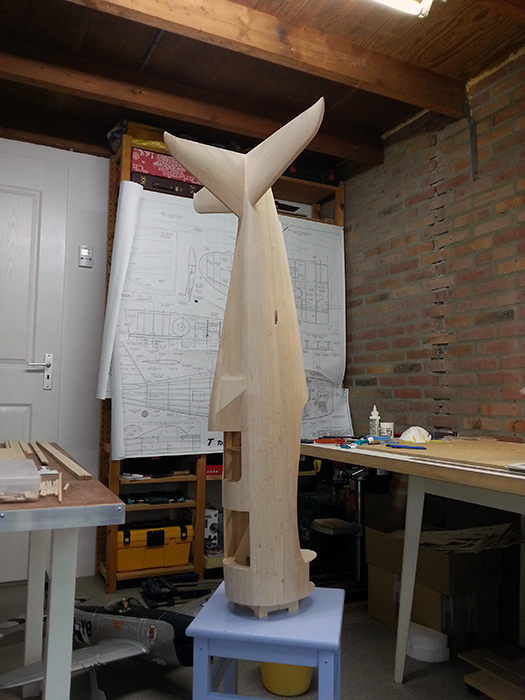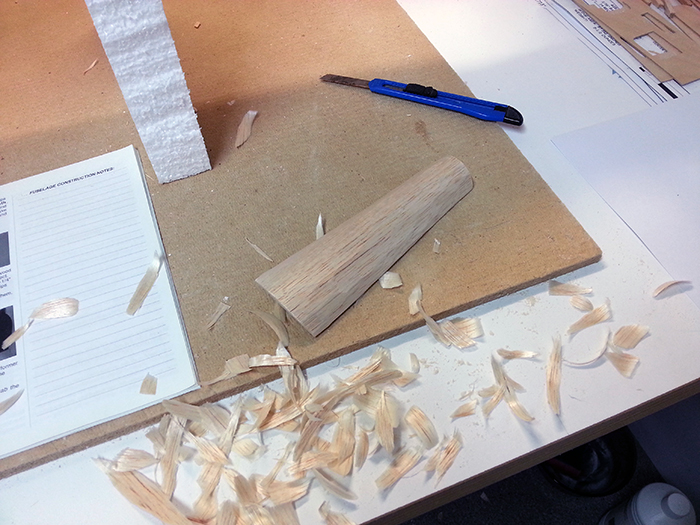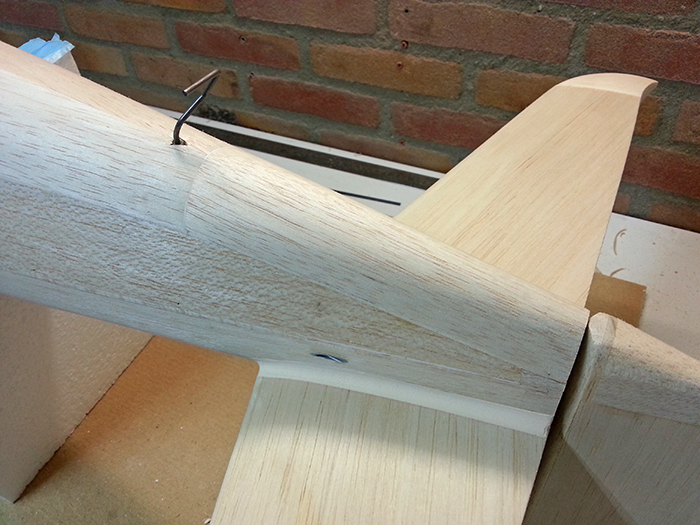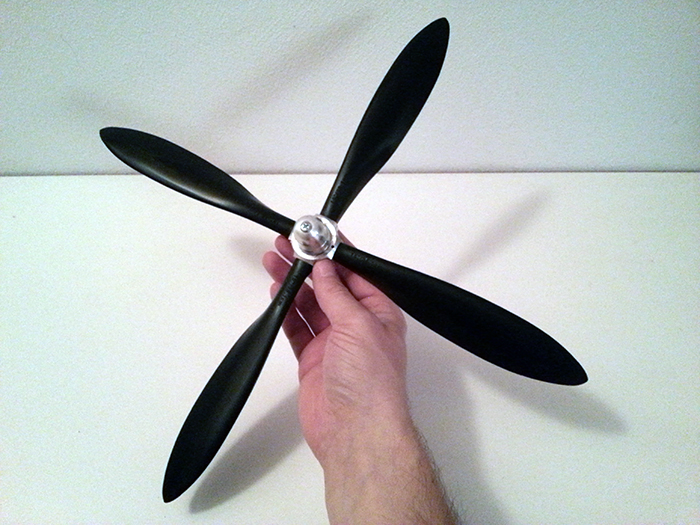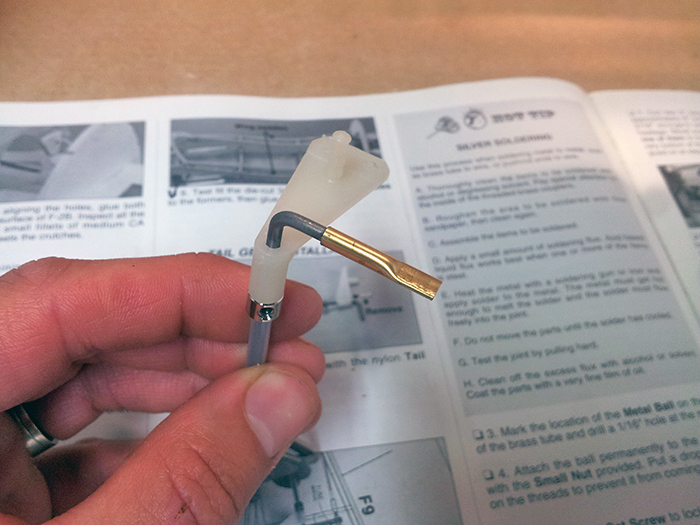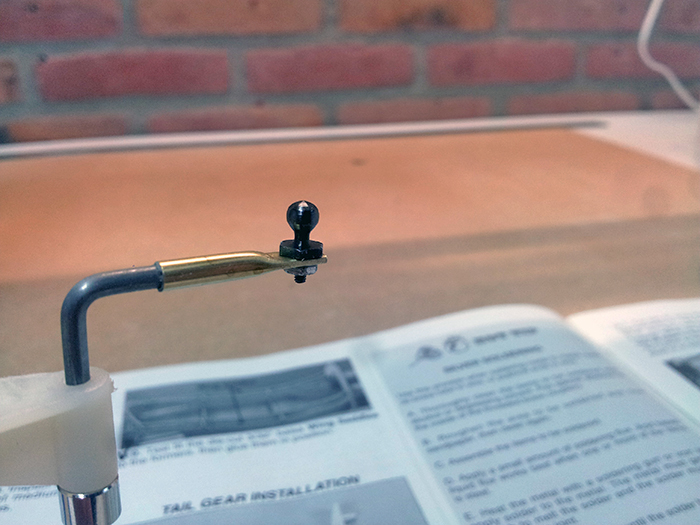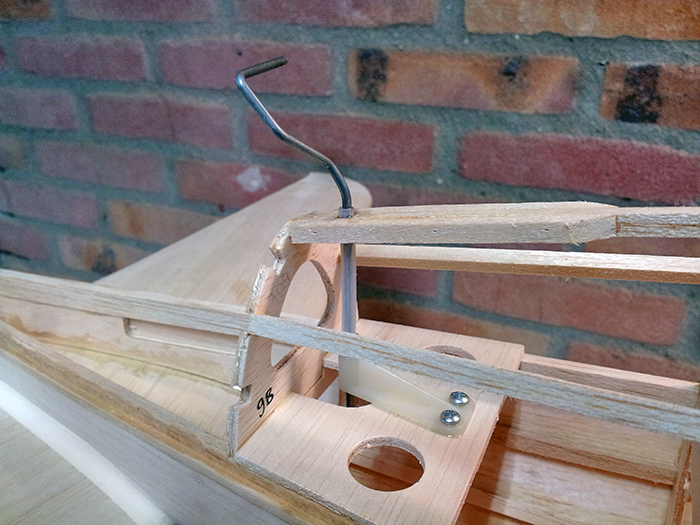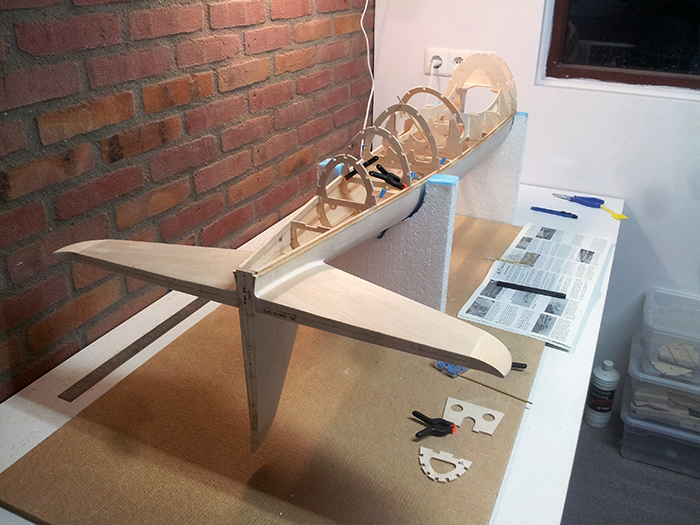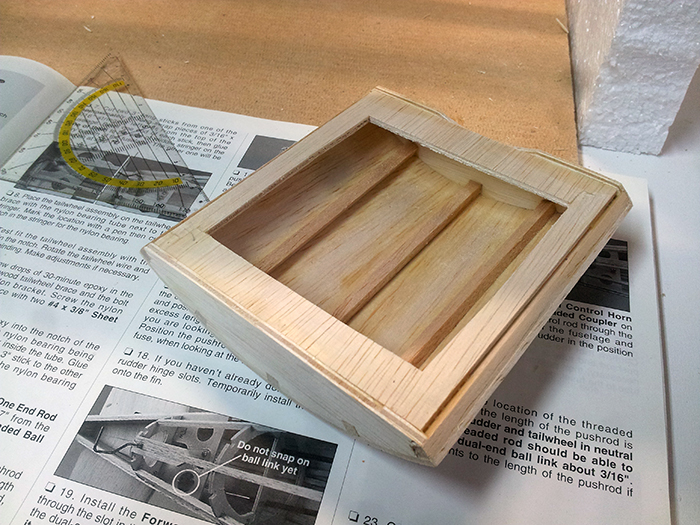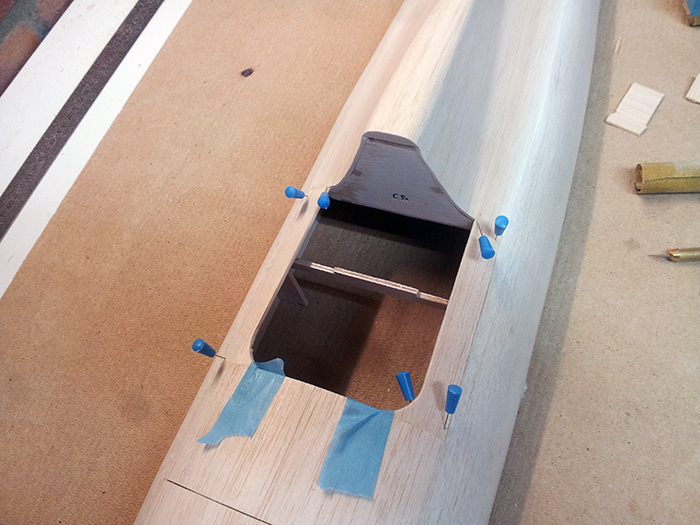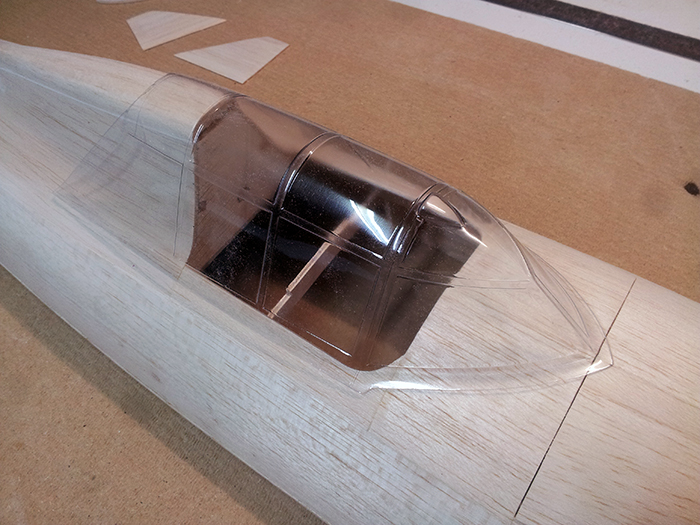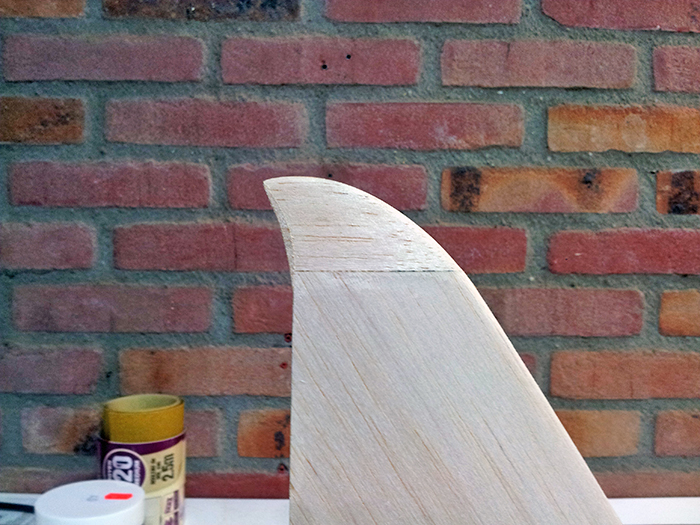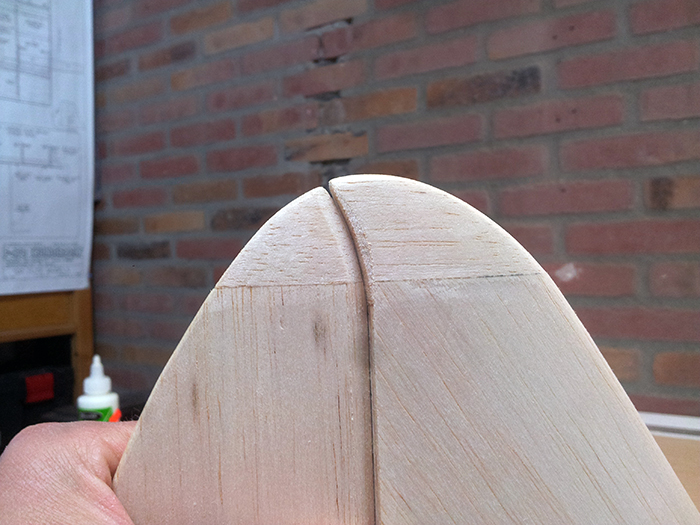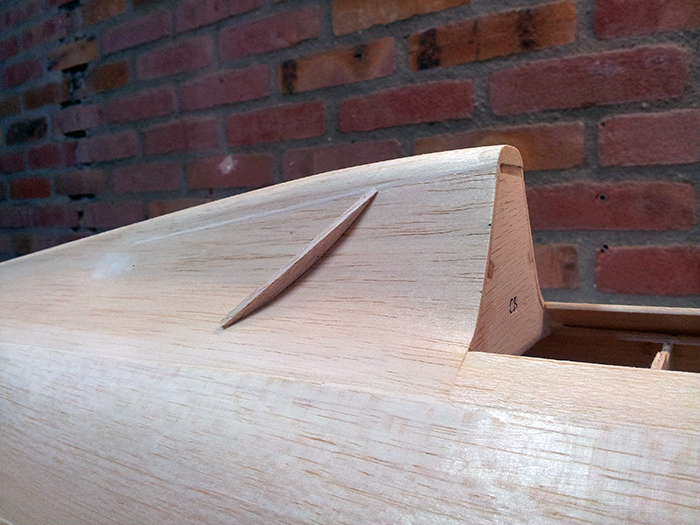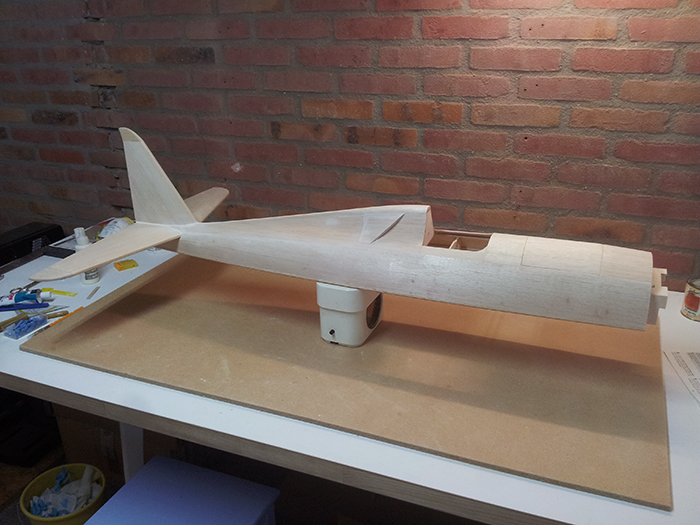I’ve picked up building again, now the flying season is coming to an end.
Before completing the lower structure of the fuse I had to install the pushrod tubes and the rudder pushrud. The rudder pushrod is connected to the tailwheel assembly with a ball link, so it needs to be installed right now:

And finished! The tailwheel steering works, the rudder pushrod has the correct length and the pushrod exits are made flush with the fuselage in the right angle:

The intercooler air exists (aft of the wings on the fuse) are cut free. As far as I can see the manual doesn’t mention anything about cutting the actual openings, but I think I will do so, to make them an actual air exit (not only ornamental), which will help with the cooling of the internal components like the battery:

Need to cut some stringers before the sheeting goes on to be able to fit the intercooler exits later on:

Time to finish up the lower fuse structure:

The shaping of the sheeting works great with the technique I have acquired during the first part of the build. I wet the complete sheet on both sides with water mixed with a dash of ammonia. After a few minutes wait the sheet feels flexible and strong (not brittle anymore) and you can just pin it on the structure:

Here you can see the compound curve of the sheet, absolutely no problem in this state (there’s no tension in the sheet, so it stays in position very well). It’s also a nice perspective of the build I think:

When dry, I remove the sheeting, apply contact glue (Bison Tix) to both the structure and the sheeting and just roll it in place. After a little sanding, the result is just great:

This is where I’m now. I only need to sheet the very bottom of the fuse and add the aft fuse block. The installation of the engine and firewall’s next, so I’m busy selecting the motor right now (as well as the prop, esc and battery):





